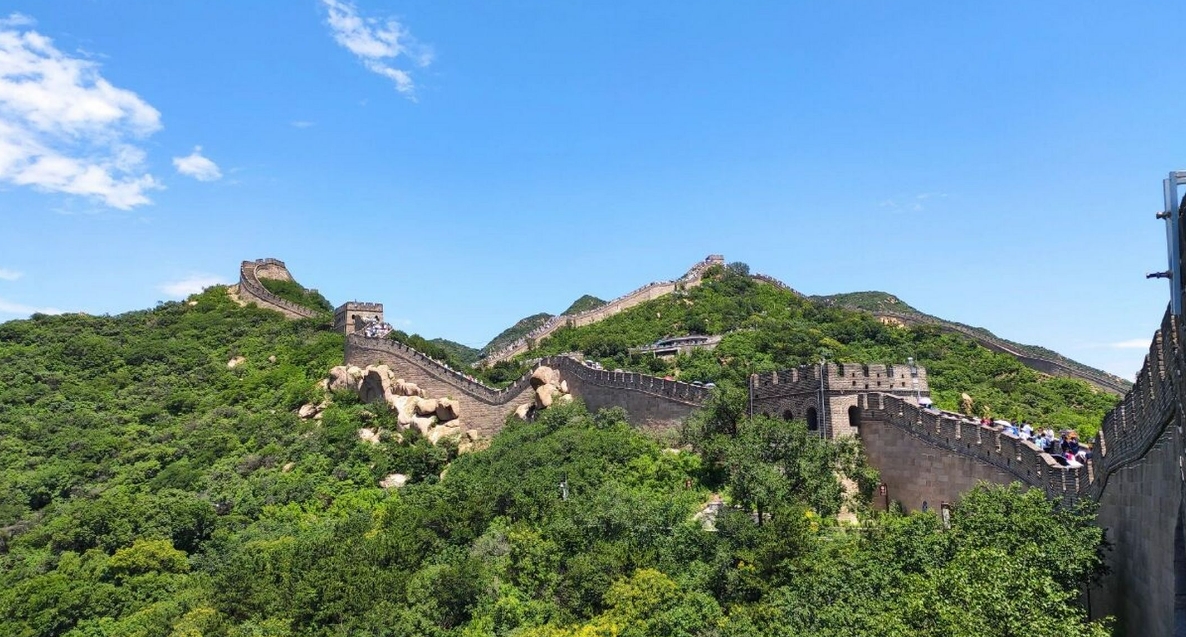
The Majestic Badaling Great Wall: A Timeless Guardian
Beijing, a city brimming with history and culture, is home to countless breathtaking attractions. Among these, the Great Wall of China undoubtedly reigns supreme, with the Badaling section standing out as a particularly awe-inspiring testament to China's past. But when was this iconic structure erected, and what secrets does it hold?
The Ming Dynasty's Legacy: A Wall of Defense
The Badaling section of the Great Wall, as we see it today, was constructed in 1505 during the Ming Dynasty, an era marked by significant architectural and military advancements. This period saw a surge in Great Wall construction, driven primarily by the need to safeguard the newly established Ming capital, Beijing, from the threat of nomadic tribes from the north.
Badaling: A Strategic Stronghold
The choice of Badaling as a location for this fortification was no accident. Nestled amidst steep, rugged mountains, Badaling served as a crucial strategic pass, offering natural protection and a commanding view of the surrounding landscape. The construction of the wall here was not merely about building a barrier; it was about establishing a powerful deterrent and a formidable line of defense.
A Closer Look at the Wall: Strength in Numbers
The sheer scale and meticulous design of the Badaling Great Wall are a testament to the engineering prowess of the Ming Dynasty.
- Towering Height: The wall averages an impressive 7.5 meters in height, equivalent to a two-story building. This towering structure provided soldiers with an elevated vantage point, allowing them to monitor the horizon for potential threats.
- Unwavering Strength: Its impressive thickness, averaging 4 meters, rendered the wall nearly impenetrable, capable of withstanding even the most determined assaults.
- Strategic Dimensions: The wall's base measures a substantial 6.5 meters in width, gradually narrowing to 5.8 meters at the top. This ingenious design provided ample space for soldiers and equipment to move along the wall's top while simultaneously enhancing its stability.
Beyond the Stones: A Glimpse into History
The Badaling Great Wall is much more than just bricks and mortar; it is a living testament to the dedication, ingenuity, and resilience of the Chinese people. It speaks volumes about a civilization's unwavering spirit in the face of adversity.
Visiting Badaling offers a unique opportunity to walk in the footsteps of history, to marvel at the architectural genius of a bygone era, and to appreciate the profound impact this iconic structure has had on China's cultural identity.
Q&A
Q: When was the Badaling section of the Great Wall built? A: The Badaling section was constructed in 1505 during the Ming Dynasty.
Q: Why was Badaling chosen as a location for the Great Wall? A: Badaling was a crucial strategic pass, offering natural protection and a commanding view due to its location amidst steep, rugged mountains.
Q: What are some of the key architectural features of the Badaling Great Wall? A: The Badaling Great Wall boasts an average height of 7.5 meters, a thickness of 4 meters, and a base width of 6.5 meters narrowing to 5.8 meters at the top. These features highlight the strategic design and engineering prowess of the Ming Dynasty.
note: This return of all, without the author's permission, may not be reproduced